Submitted:
02 October 2023
Posted:
03 October 2023
You are already at the latest version
Abstract
Keywords:
1. Introduction
2. Materials and Methods
2.1. Study sites
2.2. Local weather station observations
2.3. Sampling
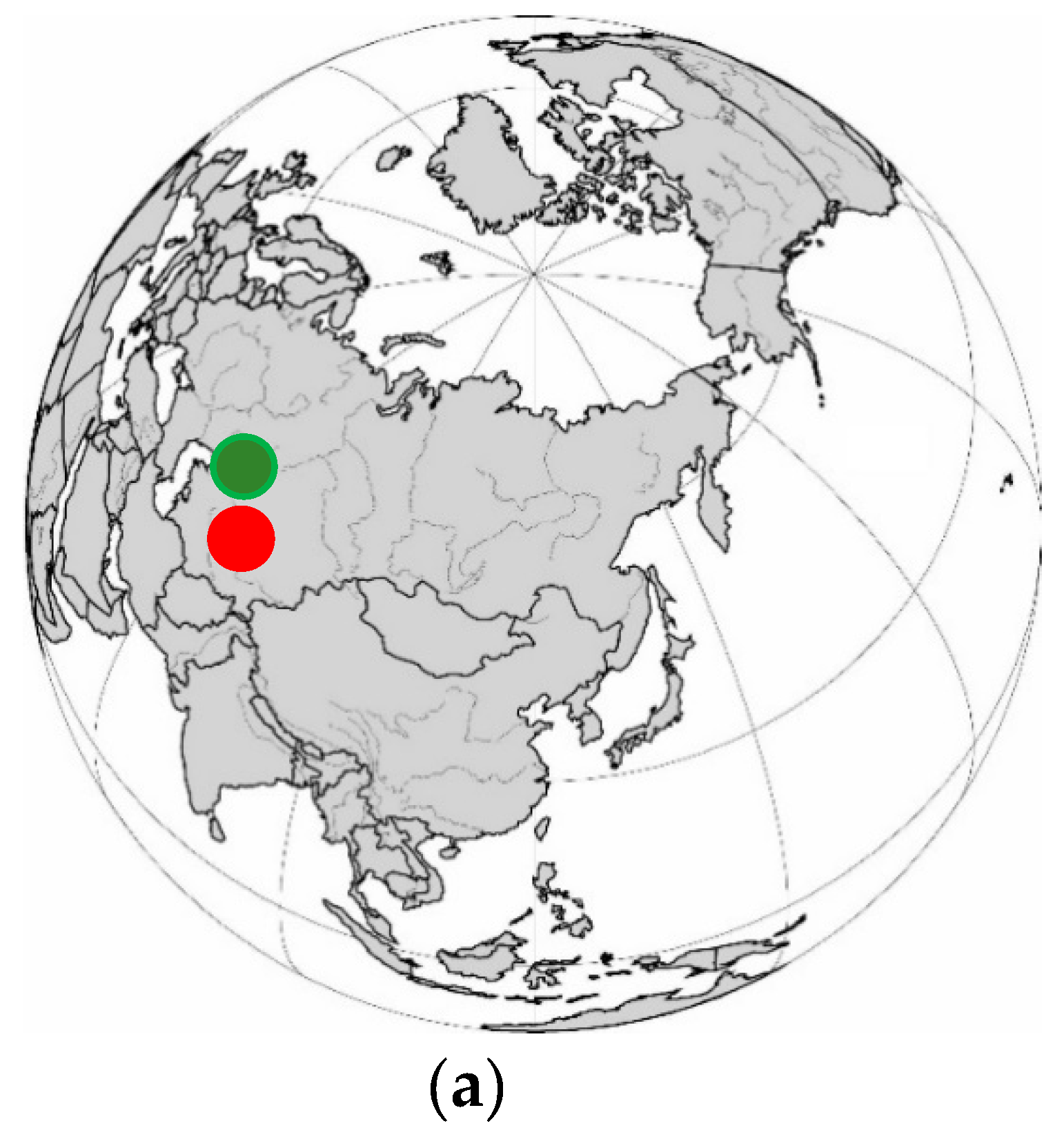
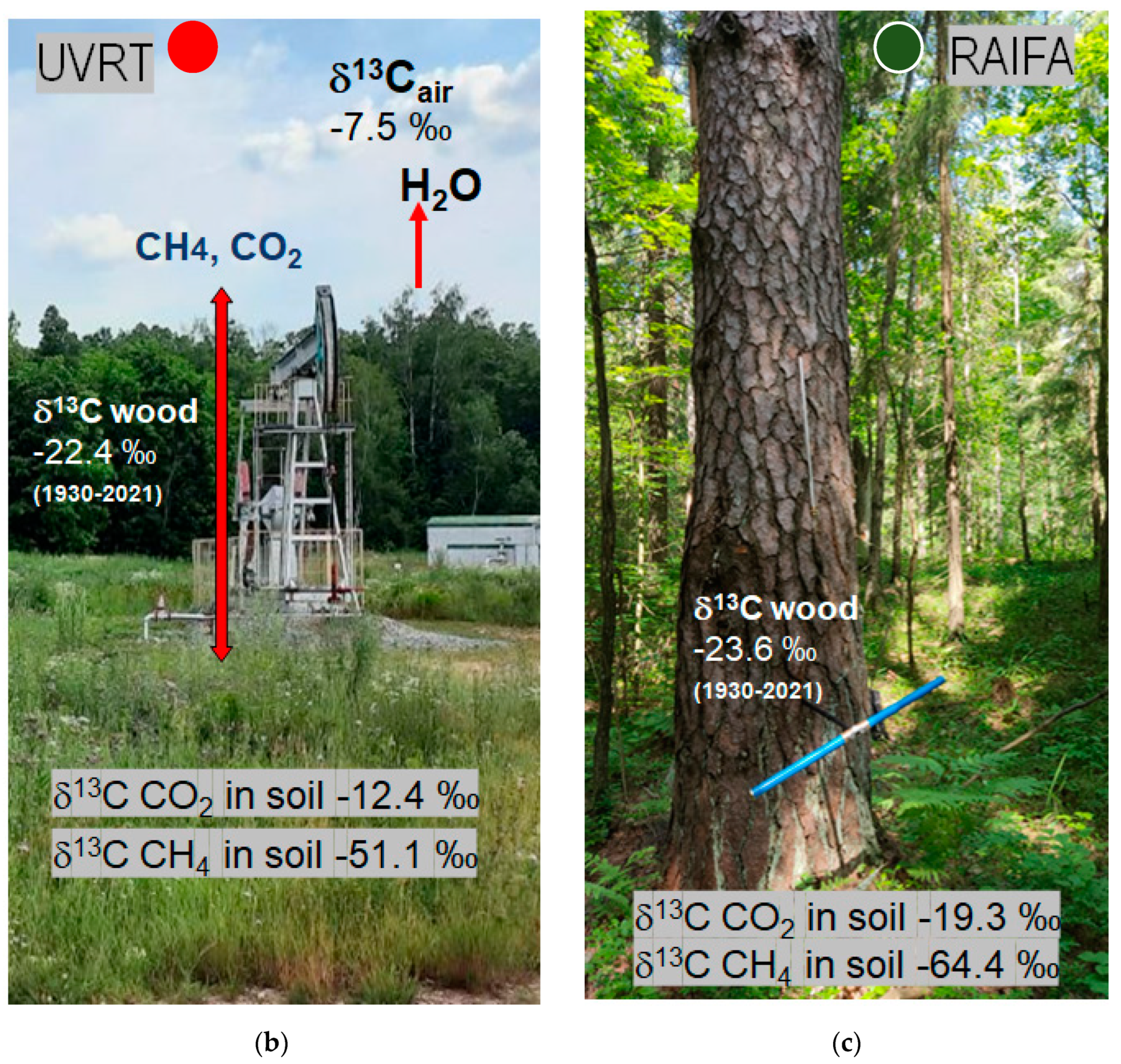
2.4. Tree-ring width and stable isotope analyses
2.5. CO2 and greenhouse gas emissions (GHG)
2.6. Relation to intrinsic water-use efficiency (iWUE)
2.7. Statistical analyses
2.8. Spatial climate patterns
3. Results
3.1. Stable carbon isotopes in wood vs. oil and gas emissions
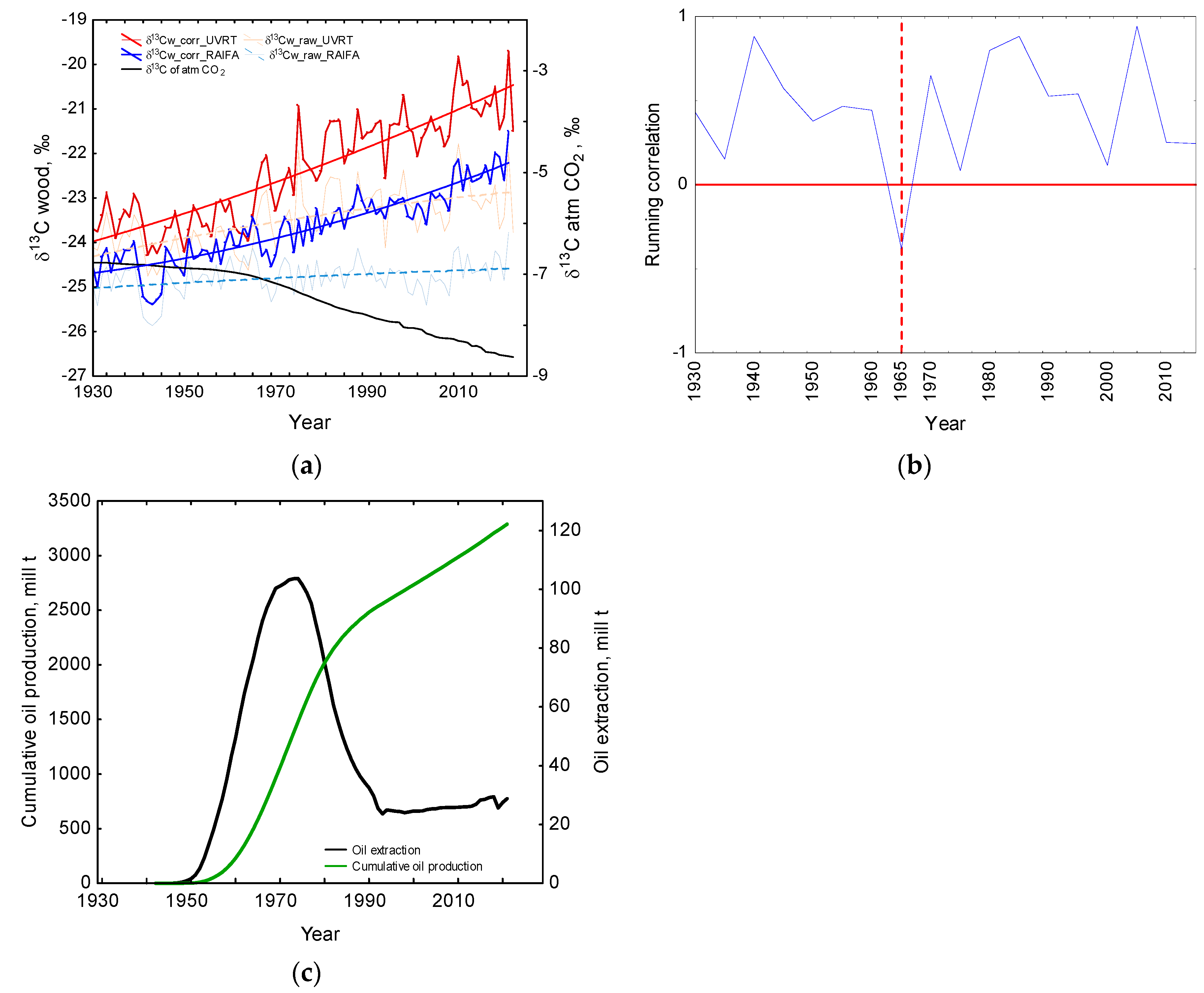
3.2. Intrinsic water use efficiency (iWUE) versus tree-ring width and tree-ring δ13C
3.3. Impact of local environmental parameters on tree-ring δ13C variability
3.4. Spatial correlations patterns
4. Discussion
5. Conclusions
Author Contributions
Funding
Data Availability Statement
Acknowledgments
Conflicts of Interest
References
- Jones, M.W.; Peters, G.P.; Gasser, T.; Andrew, R.M.; Schwingshackl, C.; Gütschow, J.; Houghton, R.A.; Friedlingstein, P.; Pongratz, J.; Le Quéré, C. National contributions to climate change due to historical emissions of carbon dioxide, methane, and nitrous oxide since 1850. Scientific Data 2023, 10, 1–23. [Google Scholar] [CrossRef] [PubMed]
- Saunois, M.; Bousquet, P.; Poulter, B.; Peregon, A.; Ciais, P.; Canadell, J.G.; Dlugokencky, E.J.; Etiope, G.; Bastviken, D.; Houweling, S.; Janssens-Maenhout, G.; Tubiello, F.N.; Castaldi, S.; Jackson, R.B.; Alexe, M.; Arora, V.K.; Beerling, D.J.; Bergamaschi, P.; Blake, D.R.; Brailsford, G.; Brovkin, V.; Bruhwiler, L.; Crevoisier, C.; Crill, P.; Covey, K.; Curry, C.; Frankenberg, C.; Gedney, N.; Höglund-Isaksson, L.; Ishizawa, M.; Ito, A.; Joos, F.; Kim, H.-S.; Kleinen, T.; Krummel, P.; Lamarque, J.-F.; Langenfelds, R.; Locatelli, R.; Machida, T.; Maksyutov, S.; McDonald, K.C.; Marshall, J.; Melton, J.R.; Morino, I.; Naik, V.; O'Doherty, S.; Parmentier, F.-J.W.; Patra, P.K.; Peng, C.; Peng, S.; Peters, G.P.; Pison, I.; Prigent, C.; Prinn, R.; Ramonet, M.; Riley, W.J.; Saito, M.; Santini, M.; Schroeder, R.; Simpson, I.J.; Spahni, R.; Steele, P.; Takizawa, A.; Thornton, B.F.; Tian, H.; Tohjima, Y.; Viovy, N.; Voulgarakis, A.; van Weele, M.; van der Werf, G.R.; Weiss, R.; Wiedinmyer, C.; Wilton, D.J.; Wiltshire, A.; Worthy, D.; Wunch, D.; Xu, X.; Yoshida, Y.; Zhang, B.; Zhang, Z.; Zhu, Q. The global methane budget 2000–2012. Earth Syst. Sci Data 2016, 8, 697–751. [Google Scholar] [CrossRef]
- Bruhwiler, L.M.; Basu, S.; Bergamaschi, P.; Bousquet, P.; Dlugokencky, E.; Houweling, S.; Ishizawa, M.; Kim, H.S.; Locatelli, R.; Maksyutov, S.; Montzka, S.; Pandey, S.; Patra, P.K.; Pétron, G.; Saunois, M.; Sweeney, C.; Schwietzke, S.; Tans, P.; Weatherhead, E.C. CH4 emissions from oil and gas production: Have recent large increases been detected? J. Geophys. Res.-Atmos 2017, 122, 4070–4083. [Google Scholar] [CrossRef]
- IPCC. Summary for Policymakers. In Climate Change 2021: The Physical Science Basis. Contribution of Working Group I to the Sixth Assessment Report of the Intergovernmental Panel on Climate Change [Masson-Delmotte, V. et al (eds.)]; Cambridge University Press, IPCC: Cambridge, United Kingdom; New York, NY, USA, 2021. [Google Scholar] [CrossRef]
- Privalova, N.M.; Dvadnenko, M.V.; Nekrasova, A.A.; Privalov, D.M.; Popova, O.S. Impact of oil and oil products on the environment. Technical Sciences 2017. [Google Scholar] [CrossRef]
- Ritchie, H.; Roser, M.; Rosado, P. Greenhouse Gas Emissions. 2020 Published online at OurWorldInData.org. Retrieved from: 'https://ourworldindata.org/co2-and-greenhouse-gas-emissions' [Online Resource].
- Allen, C.D.; Macalady, A.K.; Chenchouni, H.; Bachelet, D.; McDowell, N.; Vennetier, M.; Kitzberger, T.; Rigling, A.; Breshears, D.D.; Hogg (Ted), E.H.; Gonzalez, P.; Fensham, R.; Zhang, Z.; Castro, J.; Demidova, N.; Lim, J.-H.; Allard, G.; Running, S.W.; Semerci, A.; Cobb, N. A global overview of drought and heat-induced tree mortality reveals emerging climate change risks for forests. Forest Ecology and Management 2010, 259, 660–684. [Google Scholar] [CrossRef]
- IPCC. Climate Change 2007: Synthesis Report. Contribution of Working Groups I, II and III to the Fourth Assessment Report of the Intergovernmental Panel on Climate Change; Core Writing Team, Pachauri, R.K., Reisinger, A., Eds.; IPCC: Geneva, Switzerland, 2007; 104p. [Google Scholar]
- Covey, K.R.; Megonigal, J.P. Methane production and emissions in trees and forests. Transley review New Phytologist 2019, 222, 35–51. [Google Scholar] [CrossRef] [PubMed]
- Menyailo, O.V.; Abraham, W.-R.; Conrad, R. Tree species affect atmospheric CH4 oxidation without altering community composition of soil methanotrophs. Soil biology and biochemistry 2010, 42, 101–107. [Google Scholar] [CrossRef]
- Farquhar, G.D.; Ehleringer, J.R.; Hubick, K.T. Carbon isotope discrimination and photosynthesis Annu. Rev. Plant Phisiol. Plant Mol. Biol. 1989, 40, 503–537. [Google Scholar] [CrossRef]
- Siegwolf, R.T.W.; Lehmann, M.M.; Goldsmith, G.R.; Churakova (Sidorova), O.V.; Mirande-Ney, C.; Timofeeva, G.; Weigt, R.B.; Saurer, M. Updating dual C and O isotope – Gas exchange model: A concept to understand plant responses to the environment and its implications for tree rings. Plant, Cell and Environment 2023, 1–22. [Google Scholar] [CrossRef]
- Farquhar, G.D.; Hubick, K.T.; Condon, A.G.; Richards, R.A. Carbon isotope fractionation and plant water-use efficiency. In Stable Isotopes in Ecological Research. Ecological Studies, vol 68; Rundel, P.W., Ehleringer, J.R., Nagy, K.A., Eds.; Springer: New York, NY, 1989. [Google Scholar] [CrossRef]
- Siegwolf, R.T.W.; Brooks, J.R.; Roden, J. Stable isotopes in tree rings inferring physiological, climatic and environmental responses stable isotope in tree rings. 2022, 773. [Google Scholar] [CrossRef]
- McCarroll, D.; Loader, N.J. Stable isotopes in tree rings. Quat. Sci. Rev. 2004, 23, 771–801. [Google Scholar] [CrossRef]
- Quinby, B.M.; Creighton, J.C.; Flacherty, E.A. Stable isotope ecology in insects: a review. Ecological entomology 2020, 45, 1231–1246. [Google Scholar] [CrossRef]
- Guerrieri, R.; Siegwolf, R.T.W.; Saurer, M.; Ripullone, F.; Mencuccini, M.; Borghetti, M. Anthropogenic NOx emissions alter the intrinsic water-use efficiency (WUEi) for Quercus cerris stands under Mediterranean climate conditions. Environ Pollut 2010, 158, 2841–2847. [Google Scholar] [CrossRef] [PubMed]
- Leonelli, G.; Battipaglia, G.; Siegwolf, R.T.W.; Saurer, M.; Morra di Cella, U.; Cherubini, P.; Pelfini, M. Climatic isotope signals in tree rings masked by air pollution: A case study conductance along the Mont Blanc Tunnel access road (Western Alps, Italy). Atmos Environ 2012, 61, 169–1719. [Google Scholar] [CrossRef]
- Romashkino oil field (Ed. R.Kh.Muslimov), v1; VNIIOENG: Moscow, 1995; 492p. [Google Scholar]
- Khasanova, A.; Bakhtina, O. Tatneft estimates reserves of the Romashkinskoye field. 2023. Neftegaz Internet source https://neftegaz.ru/news/gas/774735-tatneft-otsenila-zapasy-romashkinskogo-mestorozhdeniya/.
- Selley, R.; Sonnenberg, S.A. Elements of Petroleum Geology, Third Edition ed; 2014. [Google Scholar] [CrossRef]
- Bakin, O.V.; Rogova, T.V.; Sitnikov, A.P. Vascular plants of Tatarstan; University Press: Kazan, 2000; 496 p, Available online: https://ourworldindata.org/co2-and-greenhouse-gas-emissions.
- RIHMI-WDC. Baseline Climatological Data Sets. Obninsk, Russia. 2022. Available online: http:\\meteo.ru\english\data (accessed on 3 December 2022).
- Cook, E.R.; Kairiukstis, L.A. Methods of dendrochronology. Applications in the Environmental Sciences; 1990; 394p. [Google Scholar] [CrossRef]
- Francey, R.J.; Allison, C.E.; Etheridge, D.M.; Trudinger, C.M.; Enting, I.G.; Leuenberger, M.; Langenfelds, R.L.; Michel, E.; Steele, E. A 1000-year high precision record of δ13C in atmospheric CO2. Tellus B 1999, 51, 170–193. [Google Scholar] [CrossRef]
- Rinn, F. TSAPWin – Time series analysis and presentation for dendrochronology and related applications, V. 0.53, User Reference, Heidelberg, 2005.
- Holmes, R.L. Computer-assisted quality control in tree-ring dating and measurement. Tree-Ring Bulletin 1983, 43, 51–67. [Google Scholar]
- Grissino-Mayer, H.D. Evaluating cross-dating accuracy: A manual and tutorial for the computer program COFECHA. Tree-Ring Research, 2001; 57, 205–221.27. [Google Scholar]
- Isodat 2.0 Operating Manual Isodat 2.0 Operating Manual Thermo Electron (Bremen) GmbH. Finnigan Advanced Mass Spectrometry. Bremen, Germany.
- Saurer, M.; Voelker, S. Intrinsic water-use efficiency derived from stable carbon isotopes of tree rings. In Stable isotopes in tree rings; 2023; pp. 481–498. [Google Scholar]
- Saurer and Siegwolf In Book Stable Isotopes as Indicators of Ecological Change Eds. Todd E. Dawson and Rolf T.W. Siegwolf. 2007; ISBN 978-0-12-373627-7.
- Blackman, R.; Tukey, J.W. The Measurement of Power Spectra from the Point of View of Communications Engineering—Part I. Bell Syst. Tech. J. 1958, 37, 185–282. [Google Scholar] [CrossRef]
- Khasanova, A.; Bakhtina, O. Tatneft estimates reserves of the Romashkinskoye field. 2023. Neftegaz Internet source https://neftegaz.ru/news/gas/774735-tatneft-otsenila-zapasy-romashkinskogo-mestorozhdeniya/.
- Pickell, P.D.; Gergel, S.E.; Coops, N.C.; Andison, D.W. Monitoring Forest Change in Landscapes Under-Going Rapid Energy Development: Challenges and New Perspectives. Land 2014, 3, 617–638. [Google Scholar] [CrossRef]
- Turner, A.J.; Jacon, D.J.; Benmergui, J.; Wofsy, S.C.; Maasakkers, J.D.; Butz, A.; Hasekamp, O.; Biraud, S.C. A large increase in U.S. methane emissions over the past decade inferred from satellite data and surface observations. Geophysical Research Letter 2016, 43, 2218–2224. [Google Scholar] [CrossRef]
- Vaganov, E.; Hughes, M.; Kirdyanov, A.; et al. Influence of snowfall and melt timing on tree growth in subarctic Eurasia. Nature 1999, 400, 149–151. [Google Scholar] [CrossRef]
- Knorre, A.A.; Siegwolf, R.T.W.; Saurer, M.; Sidorova, O.V.; Vaganov, E.A.; Kirdyanov, A.V. Twentiethcentury trends in tree ring stable isotopes (d13C and d18 O) of Larix sibirica under dry conditions in the forest steppe in Siberia. J. Geophys. Res. 2010, 115, G03002. [Google Scholar] [CrossRef]
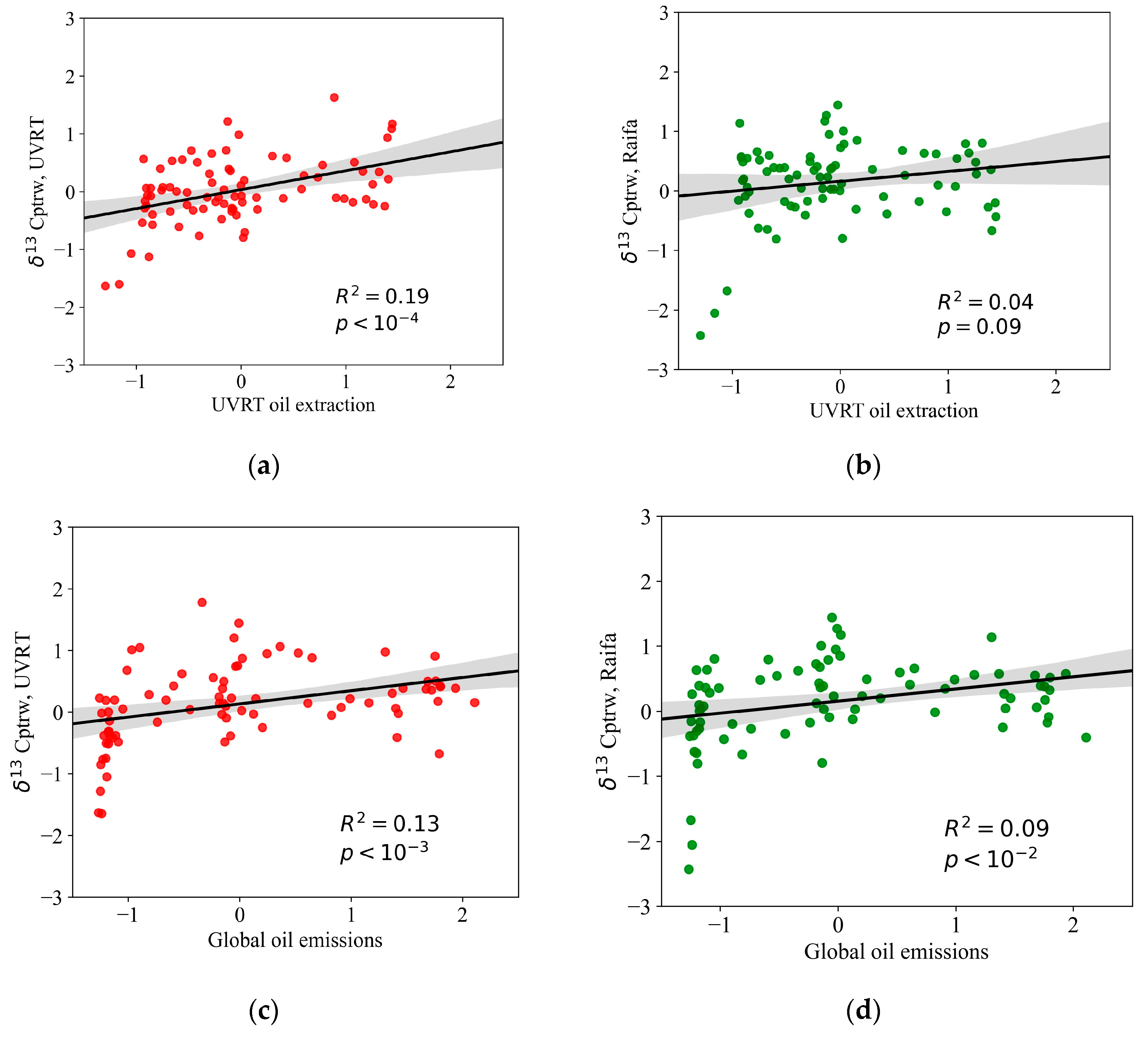
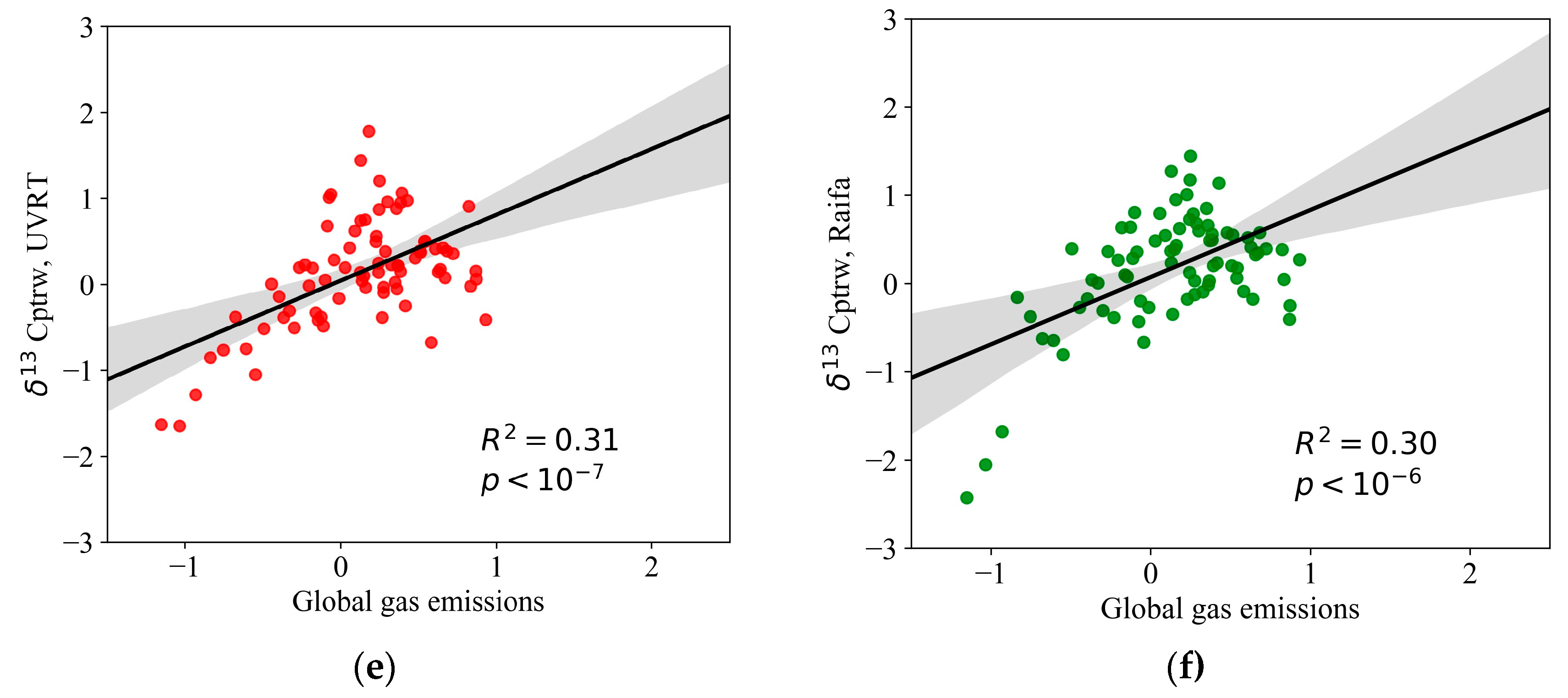
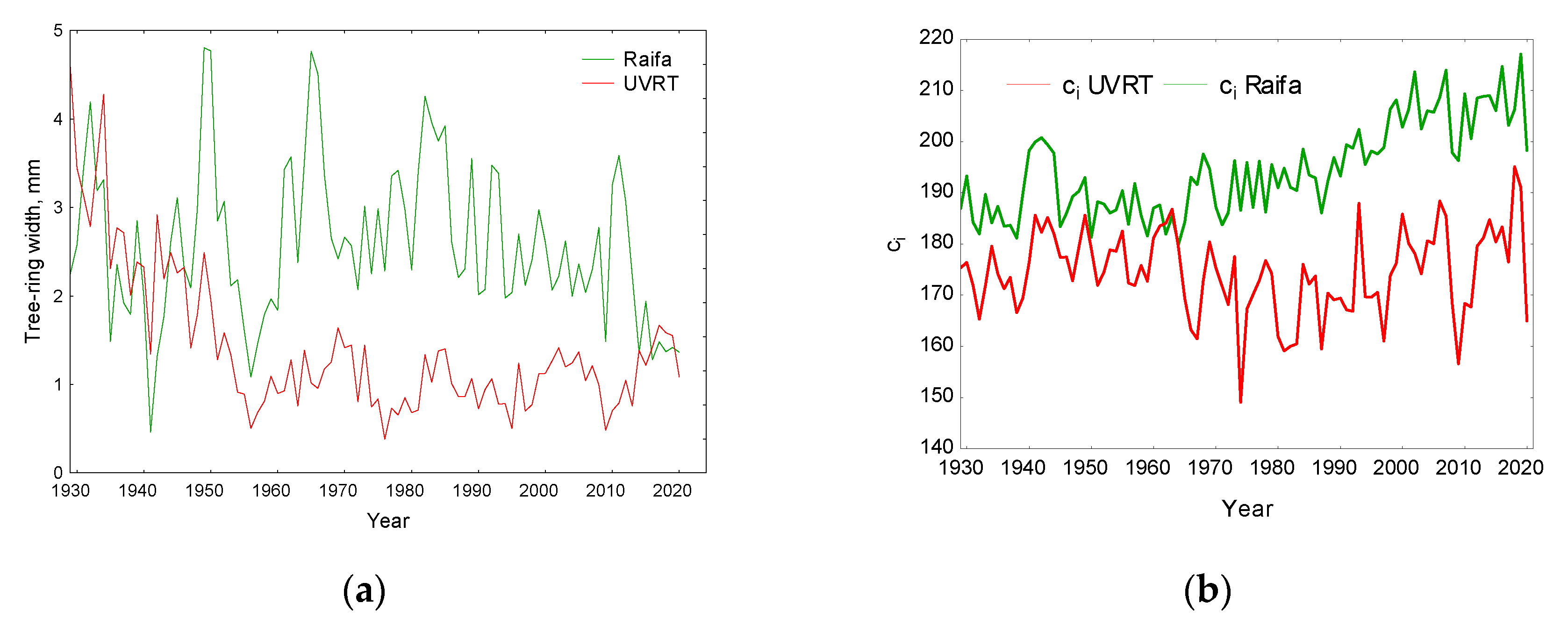
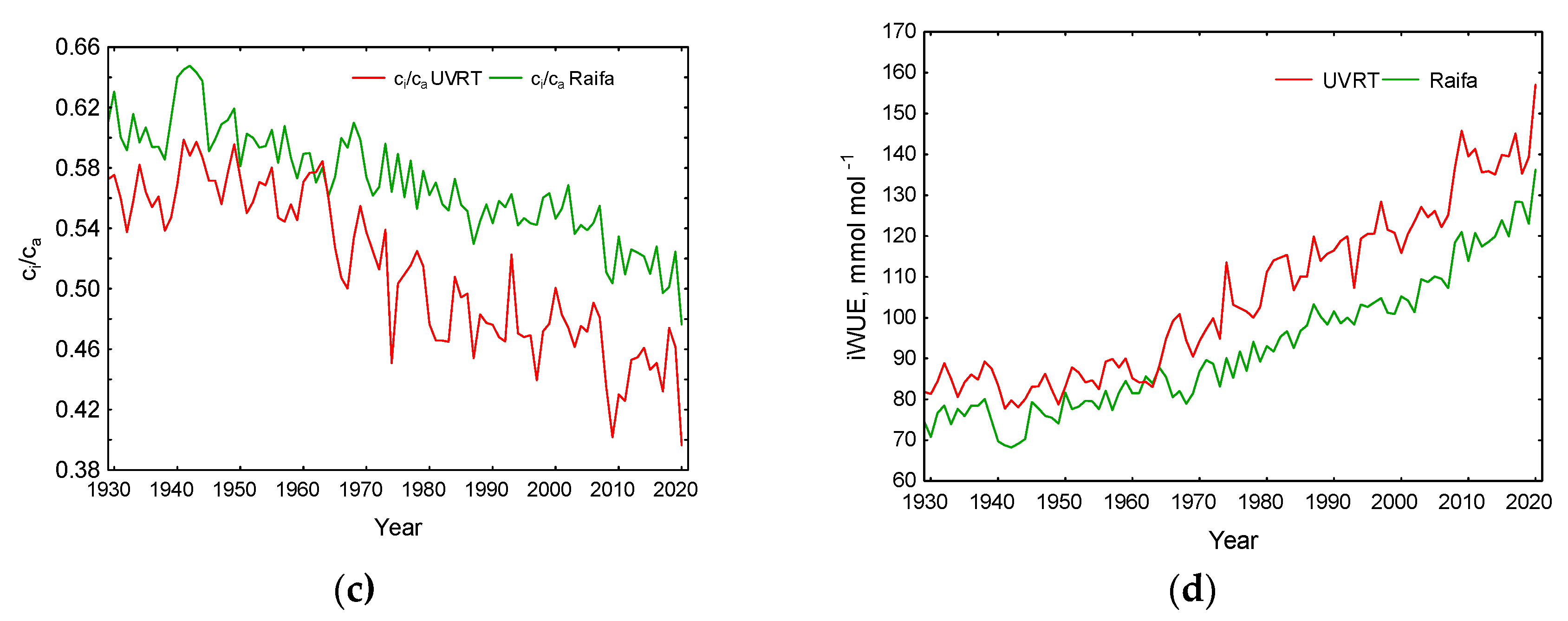
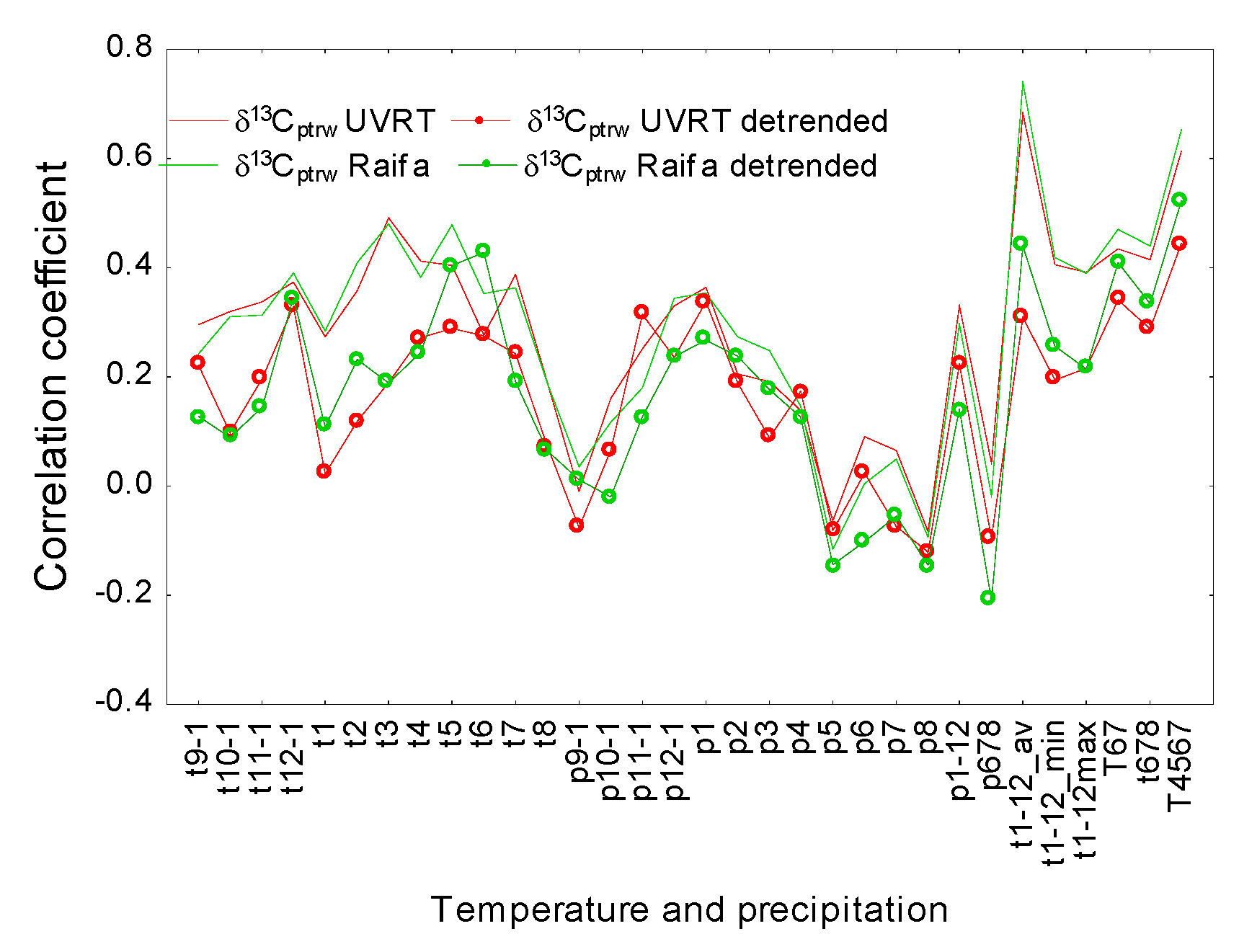
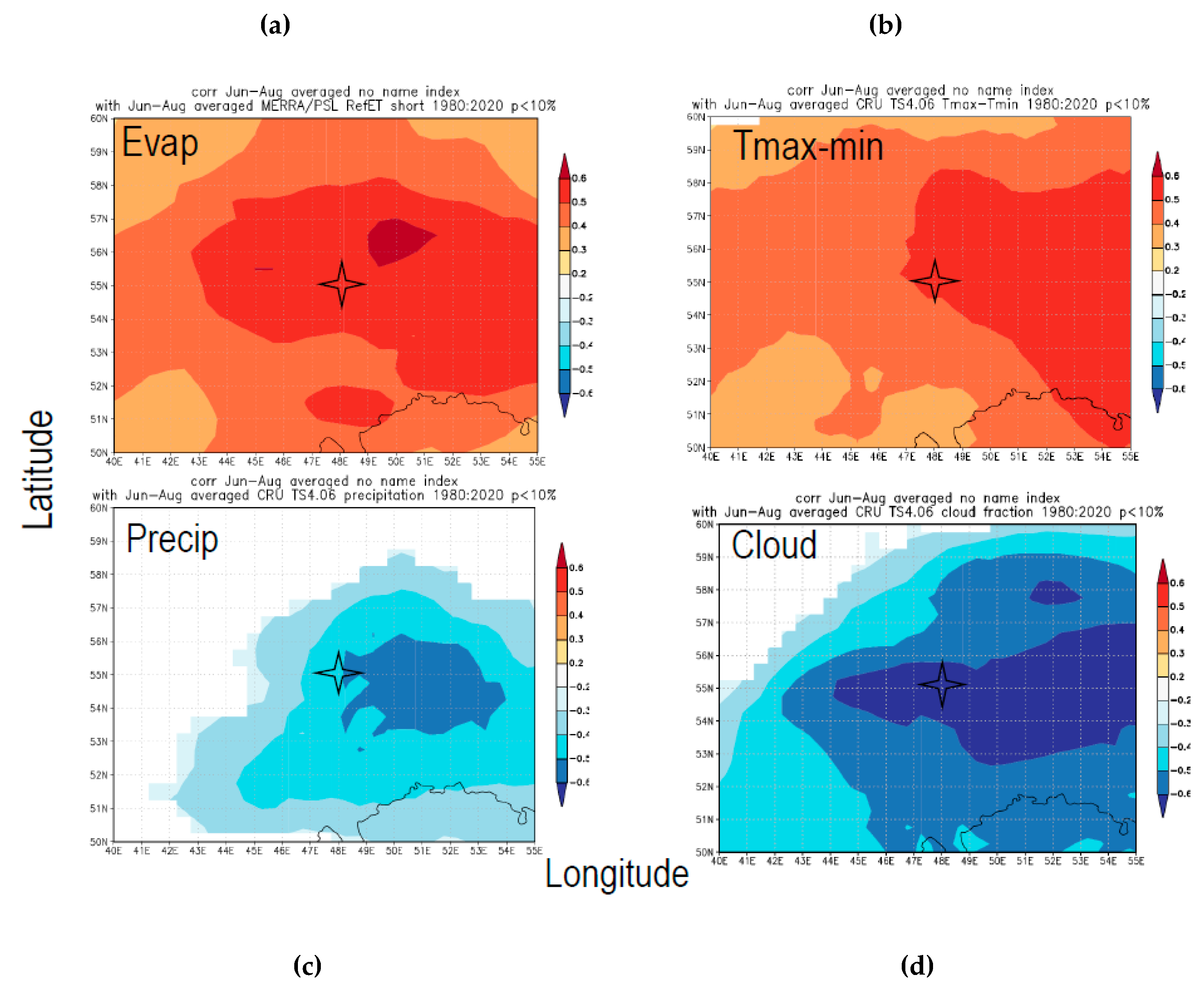
Disclaimer/Publisher’s Note: The statements, opinions and data contained in all publications are solely those of the individual author(s) and contributor(s) and not of MDPI and/or the editor(s). MDPI and/or the editor(s) disclaim responsibility for any injury to people or property resulting from any ideas, methods, instructions or products referred to in the content. |
© 2023 by the authors. Licensee MDPI, Basel, Switzerland. This article is an open access article distributed under the terms and conditions of the Creative Commons Attribution (CC BY) license (http://creativecommons.org/licenses/by/4.0/).



